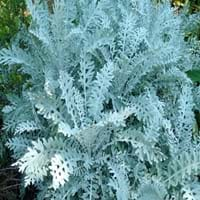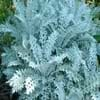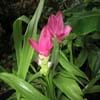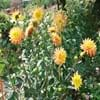Life Span
Annual and Perennial
Annual
Type
Tender Perennial
Herbs
Origin
Southern Europe, Mediterranean
Europe, Asia
Types
Silver Lace, Cirrus
Admiral Pepper,Bell Pepper,Mohawk Pepper,Yolo Wonder Pepper
Habitat
Coastal Regions, Warmer regions
Cropland, Oil fields, Waste areas
USDA Hardiness Zone
7-11
4-9
AHS Heat Zone
12-1
Not Available
Sunset Zone
H1, H2, 8, 9, 10, 11, 12, 13, 14, 15, 16, 17, 18, 19, 20, 21, 22, 23, 24
Not Available
Habit
Cushion/Mound-forming
Clump-Forming
Flower Color
White, Yellow, Purple
White
Flower Color Modifier
Bicolor
Not Available
Fruit Color
Tan
Green, Tan
Leaf Color in Spring
Blue Green, Silver
Green
Leaf Color in Summer
Blue Green, Silver
Not Available
Leaf Color in Fall
Blue Green, Silver
Green
Leaf Color in Winter
Light Green
Green
Leaf Shape
Irregular
Egg-shaped
Plant Season
Spring, Summer, Fall, Winter
Not Available
Sunlight
Full Sun
Full Sun, Partial Sun
Growth Rate
Medium
Very Fast
Type of Soil
Clay, Loam, Sand
Clay, Loam, Sand
The pH of Soil
Acidic, Neutral, Alkaline
Acidic, Neutral, Alkaline
Soil Drainage
Well drained
Well drained
Bloom Time
Early Summer, Summer, Late Summer
Early Spring, Spring, Late Spring, Late Fall, Early Winter, Winter, Late Winter
Tolerances
Drought
Pollution
Where to Plant?
Container, Ground
Ground, Pot
How to Plant?
Seedlings, Stem Planting
Stem Planting, Transplanting
Plant Maintenance
Medium
Medium
Watering Requirements
Do Not over Water, Never Over-water, Requires regular watering, Requires watering in the growing season, Water Deeply
Prefer drip-irrigation instead of Over-head watering, Water Deeply
In Summer
Lots of watering
Lots of watering
In Spring
Moderate
Moderate
In Winter
Average Water
Average Water
Soil pH
Acidic, Neutral, Alkaline
Acidic, Neutral, Alkaline
Soil Type
Clay, Loam, Sand
Clay, Loam, Sand
Soil Drainage Capacity
Well drained
Well drained
Sun Exposure
Full Sun
Full Sun, Partial Sun
Pruning
Remove dead leaves, Remove deadheads
Prune ocassionally, Prune to control growth
Fertilizers
fertilize every 2-3 weeks while growing, Nitrogen, Phosphorous, Potassium
All-Purpose Liquid Fertilizer
Pests and Diseases
Blight, Downy mildew, Powdery mildew, Red blotch, Rust, White mold
Not Available
Plant Tolerance
Drought
Drought
Flowers
Insignificant
Insignificant
Flower Petal Number
Single
Single
Foliage Texture
Medium
Fine
Foliage Sheen
Matte
Not Available
Attracts
Flying insects, Insects
Not Available
Allergy
Avoid during Pregnancy, Skin irritation, Skin rash, Toxic
Not Available
Aesthetic Uses
Showy Purposes
Not Used For Aesthetic Purpose
Beauty Benefits
No Beauty Benefits
Not Available
Environmental Uses
Air purification, Food for insects, Prevent Soil Erosion
Air purification
Medicinal Uses
Headache, Menstrual Disorders, Migraines
Not Available
Part of Plant Used
Leaves
Not Available
Other Uses
Employed in herbal medicine, Showy Purposes, Used as Ornamental plant, Used for its medicinal properties
Unknown
Used As Indoor Plant
Yes
No
Used As Outdoor Plant
Yes
Yes
Garden Design
Bedding Plant, Container, Cutflower, Edging, Mixed Border, Rock Garden / Wall
Not Available
Botanical Name
CENTAUREA cineraria
CARDAMINE hirsuta
Common Name
Silver dust
Hairy Bittercress
In Hindi
डस्टी मिलर
बालों वाली Bittercress
In German
Dusty Miller
Hairy Bittercress
In French
Dusty Miller
Bittercress Poilu
In Spanish
Dusty Miller
Bittercress Peludo
In Greek
Dusty Miller
τριχωτές Bittercress
In Portuguese
Dusty Miller
Bittercress cabeludo
In Polish
Dusty Miller
włochaty Bittercress
In Latin
Dusty Cicero
pilosus bittercress
Phylum
Anthophyta
Magnoliophyta
Class
Magnoliopsida
Magnoliopsida
Order
Asterales
Brassicales
Family
Asteraceae
Brassicaceae
Genus
Centaurea
Cardamine
Clade
Angiosperms, Asterids, Eudicots
Not Available
Tribe
Cynareae
Not Available
Subfamily
Carduoideae
Not Available
Number of Species
Not Available
Not Available
Properties of Dusty Miller and Hairy Bittercress
Wondering what are the properties of Dusty Miller and Hairy Bittercress? We provide you with everything About Dusty Miller and Hairy Bittercress. Dusty Miller doesn't have thorns and Hairy Bittercress doesn't have thorns. Also Dusty Miller does not have fragrant flowers. Dusty Miller has allergic reactions like Avoid during Pregnancy, Skin irritation, Skin rash and Toxic and Hairy Bittercress has allergic reactions like Avoid during Pregnancy, Skin irritation, Skin rash and Toxic. Compare all the properties and characteristics of these two plants. Find out which of these plant can be used as indoor plant. If you are interested to decorate your house and garden, find out aesthetic uses, compare them and select the plant which will beautify your surrounding. Along with beautification, try comparing medicinal and edible uses of Dusty Miller and Hairy Bittercress and you can choose the plant having best and most benefits.
Season and Care of Dusty Miller and Hairy Bittercress
Season and care of Dusty Miller and Hairy Bittercress is important to know. While considering everything about Dusty Miller and Hairy Bittercress Care, growing season is an essential factor. Dusty Miller season is Spring, Summer, Fall and Winter and Hairy Bittercress season is Spring, Summer, Fall and Winter. The type of soil for Dusty Miller is Clay, Loam, Sand and for Hairy Bittercress is Clay, Loam, Sand while the PH of soil for Dusty Miller is Acidic, Neutral, Alkaline and for Hairy Bittercress is Acidic, Neutral, Alkaline.
Dusty Miller and Hairy Bittercress Physical Information
Dusty Miller and Hairy Bittercress physical information is very important for comparison. Dusty Miller height is 20.30 cm and width 30.50 cm whereas Hairy Bittercress height is 10.20 cm and width 5.10 cm. The color specification of Dusty Miller and Hairy Bittercress are as follows:
Dusty Miller flower color: White, Yellow and Purple
Dusty Miller leaf color: Blue Green and Silver
Hairy Bittercress flower color: White
- Hairy Bittercress leaf color: Green
Care of Dusty Miller and Hairy Bittercress
Care of Dusty Miller and Hairy Bittercress include pruning, fertilizers, watering etc. Dusty Miller pruning is done Remove dead leaves and Remove deadheads and Hairy Bittercress pruning is done Prune ocassionally and Prune to control growth. In summer Dusty Miller needs Lots of watering and in winter, it needs Average Water. Whereas, in summer Hairy Bittercress needs Lots of watering and in winter, it needs Average Water.





